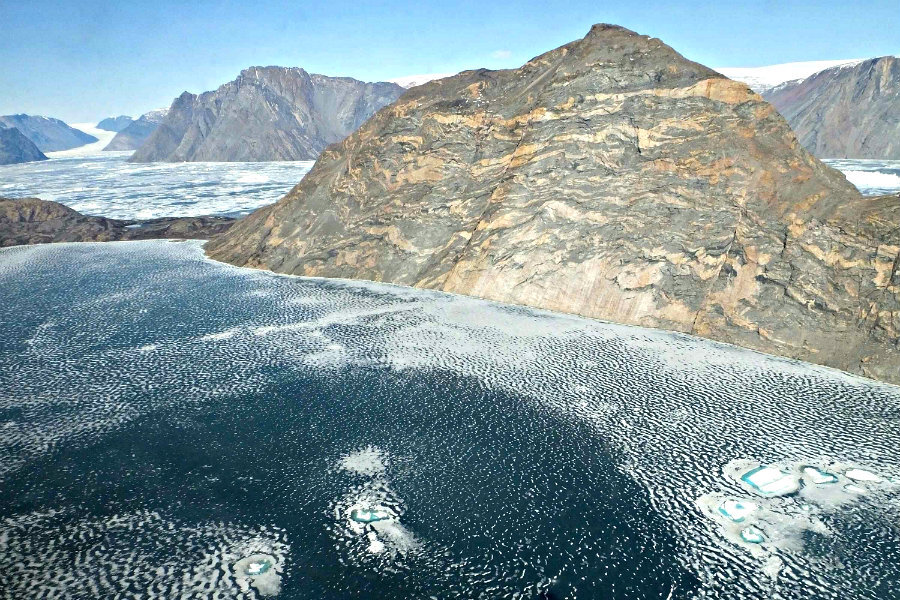Greenland is heating up, and so could its tourism
Loading...
Temperatures in Greenland’s capital, Nuuk, reached a record high for June, hitting 75 degrees Fahrenheit last Saturday. The rapid warming of the ice-coated land is producing dramatic glacier calving, prompting speculation that its tourist industry will rise with its temperatures.
Like many other typically cool locales, Greenland has experienced a warmer spring than usual this year. At 75 degrees, last Saturday’s temperatures were higher in Greenland than they were in New York City, where thermometers showed just 71 degrees.
Last weekend’s temperatures blew past the prior record of 73.8 degrees, set in 2014, indicative of a global trend towards temperatures that are higher than historical averages.
In mid-April, the tiny town of Kangerlussuaq recorded highs of 64.4 degrees, another unseasonably warm temperature for the island. “This was the warmest April temperature on record at that location,” reported Mashable, “and it nearly set an all-time warm temperature record for Greenland as a whole.”
Scientists say that Saturday’s temperatures were influenced by Nuuk’s winds, which blew downhill from the East. Due to a process called adiabatic warming, in which low pressure air loses altitude and warms as it compresses, local temperatures rose.
The summer of 2015 was also one of the warmest on record, due to another record setter, a jet stream that reached the furthest north it has ever reached.
The unseasonably warm weather has accelerated ice melt and glacial calving. Greenland’s ablation season, during which the island’s ice sheet melts at the edges, began on June 6, according to the Danish Meteorological Institute.
This May, melting ice sheets set record lows for ice extents, with the Arctic ice sheet measuring up to 600,000 square kilometers (the size of three Californias) less than average.
"How much and where Greenland melts can change depending on how things change elsewhere on earth," Marco Tedesco, a research professor at Columbia University's Lamont-Doherty Earth Observatory, told Science Daily. "If loss of sea ice is driving changes in the jet stream, the jet stream is changing Greenland, and this, in turn, has an impact on the Arctic system as well as the climate. It's a system, it is strongly interconnected and we have to approach it as such."
Some are seeing a silver lining in the climate change and melting ice sheets. Greenland has experienced an increase in tourism with its rising temperatures and calving coastline.
Some towns, such as the coastal town of Ilulissat, have watched their bays and harbors go from full ice cover in the winters, to patchy ice with swaths of open water.
"You can see how glaciers have been retreating. You can see the marks on the sides of the glacier where it used to be and where it is now," Anders la Cour Vahl, a consultant at the Greenland Tourism and Business Council told CNN.
"Actually being there and being a witness to what is happening to our environment, that has great appeal."








